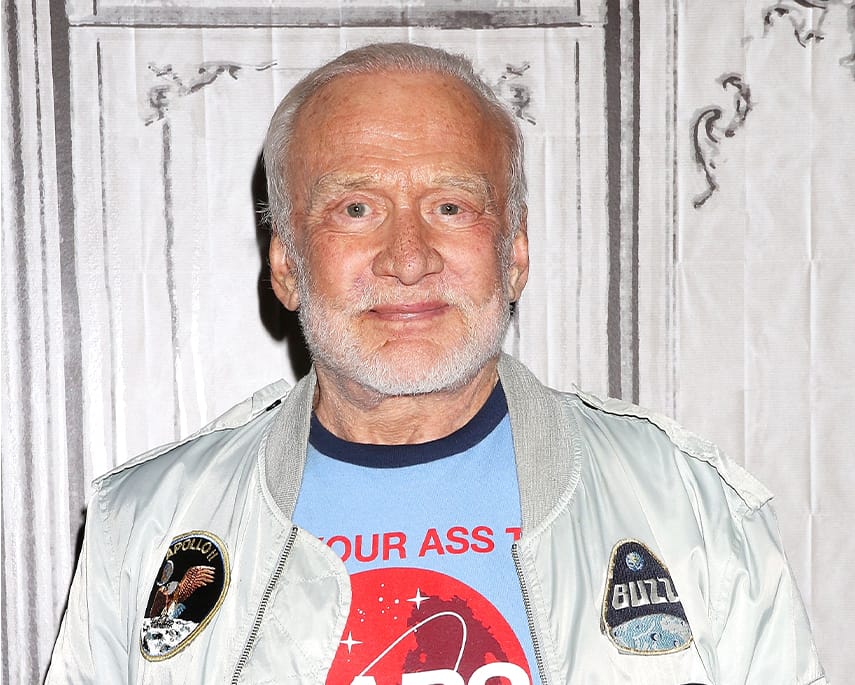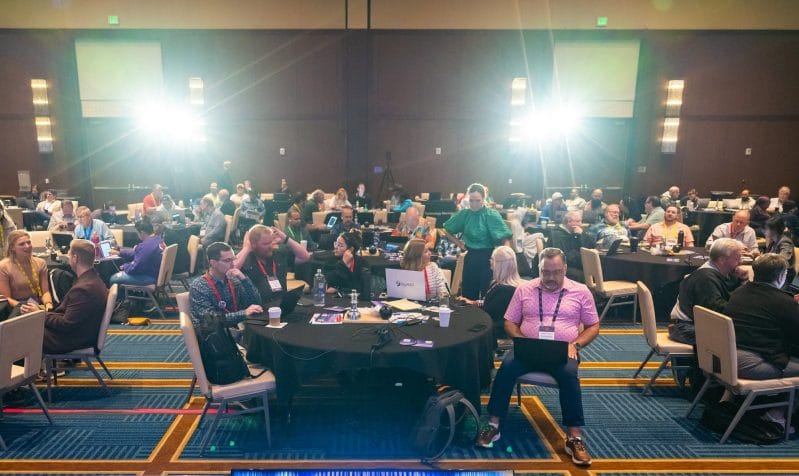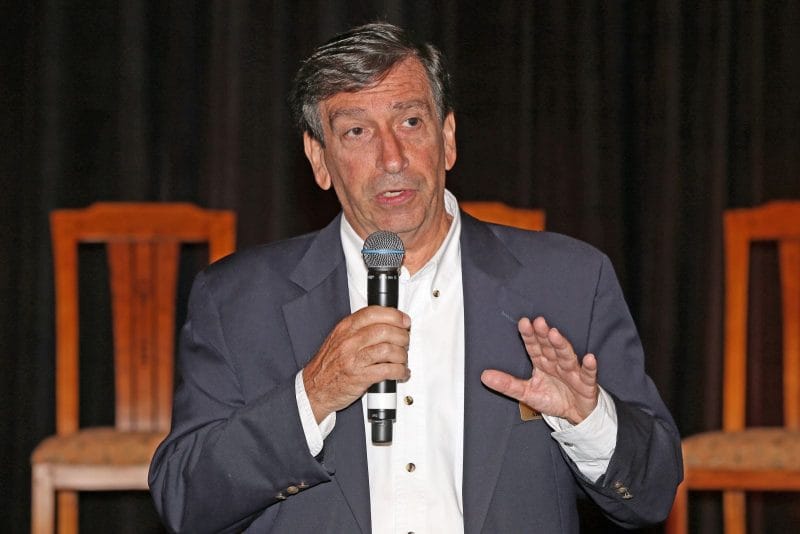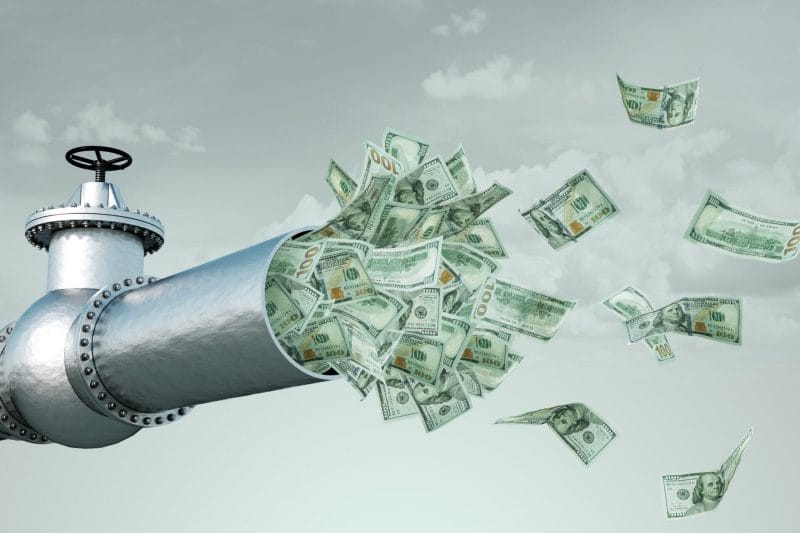“Every entrepreneur knows all too well that you can only renegade and bootstrap your business to a point; if you truly want to grow, you need to build a team that can work together, despite differences in personalities, agendas, and preferences.” – Buzz Aldrin
Fifty-two years ago this July, science fiction became reality when two men took their first steps on the moon’s surface — an event that remains one of the greatest adventures in the history of mankind, even to this day.
One of those men, Buzz Aldrin, is a unique blend of scientist, pioneer, inventor, and daredevil. The lunar landing took an incredibly dedicated team of smart, courageous “dreamers” who were determined to make the impossible possible, and there are countless lessons that can be learned from this momentous accomplishment and the man who is the only surviving hero of that historic journey.
What follows is a high-level summary of a presentation Buzz gave at our 2016 IT Sales And Marketing Boot Camp to an audience of over 1,000 MSPs.
Lesson No. 1: Think BIG.
As the saying goes, if you’re going to be thinking anyway, might as well think BIG. President John F. Kennedy delivered a historic speech in 1962 where he declared, “We choose to go to the moon,” acknowledging the difficulties of the task, rallying the crowd, and inspiring a nation to a bigger vision of the future.
NASA figured it would take 15 years to land on the moon, but Kennedy’s speech challenged them to do it before 1970. Aldrin watched in anticipation, pushing his jet fighter abilities, 2,200 logged flight hours, and advanced degrees as reason enough for him to join NASA.
He was accepted in the third round of astronaut applications and began training for the mission to the moon. He took the president’s challenge as a personal goal; as a career military man, he vowed to obey the order of his commander in chief.
“We didn’t have the know-how, but we did have a leader with the vision, the determination, the courage, and the confidence that we could get there,” Buzz said. “And by publicly stating our goal and putting a specific time period on a very specific achievement, President Kennedy gave us no way out.”
Kennedy wouldn’t live to see his dream fulfilled, but his leadership had sparked a fire. The U.S. was going to land on the moon, one way or another, using a spirit of determination that has long been the fuel for many entrepreneurs and business leaders who have pushed beyond the barriers set before them and built upon the American Dream. Kennedy knew this.
Small, timid goals do not stir men’s souls and won’t rally people behind you.
In your business, what BIG goals have you rallied your team around? Do you have a shared, mutual goal that will stretch them, challenge them, and inspire them? Here’s a little-spoken truth about attracting and keeping great people on your team: They want to work on BIG things … challenging things … significant goals. They want to be in a place that is working toward a bigger future with more opportunities to grow and learn. If you don’t provide that in your company, you’ll have a difficult time keeping them on board.
Lesson No. 2: You Need A Team You Can Depend On.
In the case of the Apollo mission, a village. It’s estimated that the project team consisted of 300,000 people — an incredible partnership between the government, private industry, and, of course, the three astronauts who executed the mission.
While Collins orbited the moon and piloted the main ship, Armstrong and Aldrin descended onto the lunar surface. Earth erupted in celebration. Three humans were up in space, and at that very moment, two of them walked on the surface of the moon, sealing up rocks to take back to Earth and taking some of the most spectacular photos in American history.
The enormity of it all wasn’t lost on Aldrin.
“Everyone felt like they had participated in this incredible journey, and the world welcomed us back as heroes from the moon,” he recalled. “However, we understand that people were not just cheering for three guys but for what we represented. That, by the nation and the world coming together, we had accomplished the impossible, and the true value of it is the amazing story of innovation and teamwork that overcame many obstacles to reach the moon.”
Every entrepreneur knows all too well that you can only renegade and bootstrap your business to a point; if you truly want to grow, you need to build a team that can work together, despite differences in personalities, agendas, and preferences. You, as the leader, are the person responsible for setting the goal and direction, then putting the right team together who can work together, despite differences, to accomplish that goal.
As Buzz said, “Apollo is the story of people at their best, working together for a common goal. With a united effort and a great team, you too can achieve great things.”
On this same topic, I appreciated what Buzz had to say during an interview about dealing with tough situations and accepting help from others. He said, paraphrased:
“Take a good, long, honest, positive look at what good can come out of every situation you’re in. Wherever you are, that’s where you are. This is your history you’re living right now, so do what you can to make the most of what comes along. And please, don’t try to do everything on your own. There are a lot of people out there in the universe who wish you well and want to be your friend. Let them help you. You don’t have to carry it all on your own.”
Lesson No. 3: Failure Is Always An Option.
In the book “No Dream Is Too High,” Buzz said, “Some people don’t like to admit that they have failed or that they have not yet achieved their goals or lived up to their own expectations. But failure is not a sign of weakness. It is a sign that you are alive and growing.”
Everyone at NASA, including Buzz, knew of the high risks involved with their mission: the Saturn V liftoff, the lunar module ascent engine firing, landing on the moon, re-entry, and splashdown. Even at NASA’s famous 99.9% reliability standard, much could still go wrong.
Yet Buzz and the entire NASA team moved forward, relying on the technical competency of the people working to make the mission happen. They focused on removing as much risk as possible, with every system and component having the “living daylights” tested out of it. They thought through every “what if” scenario they could to make even the explosion of an oxygen tank survivable.
In business, there’s always a risk of failure — and that risk stops a lot of people from going all in, setting big goals, or taking action. They focus on what could go wrong instead of what might actually go right, and because of it, they inherently fail to accomplish their dreams.
High performers understand the risks but work to mitigate them — and move ahead despite them. They know that most failures are rarely fatal, unless you give up and use them as an excuse to hold back, not take action, or not try again. All businesses require constant course-correction, cleaning up messes, righting the ship when it’s gone off course, setbacks, and disappointments. You’re never going to get everything perfect, and waiting until there is no risk before moving ahead is the only surefire way to do nothing.
Lesson No. 4: Always Have A ‘Next.’
After returning from the moon landing, Buzz’s life was filled with ticker-tape parades, interviews, meetings with heads of state, and speaking tours. But despite all of his newfound fame, he felt unfulfilled. He had accomplished an enormous dream, an incredible goal, but what was next?
“I wanted to resume my duties, but there were no duties to resume,” he wrote in “Magnificent Desolation.”
“There was no goal, no sense of calling, no project worth pouring myself into.” As a result, he sunk into severe depression and started drinking, with some days not even getting out of bed. He nearly destroyed his marriage by having an affair. He worried about the mental health issues that ran in his family, with both his mother and grandfather committing suicide.
“Simply put, I was without a career, and I was feeling the aftereffects of it all. As always, I was standing by, ready for liftoff, but I needed to realign my direction and find a new runway.”
Encouraged by his then-girlfriend, Buzz sought help, checking himself into alcohol rehabilitation. It was a start to a longer journey of recovery. But after hitting rock bottom when he was arrested for smashing in the door of his girlfriend’s apartment, he finally got disgusted enough with his behavior that he gave up the bottle for good.
Fortunately, his story ends well.
More than 50 years after our galaxy’s most famous walk, Aldrin has refused to let that achievement be all he leaves behind. With the lessons he learned, as well as the funding, research, books, and collaboration he continues to do with experts in space travel and technology, he’s built an empire. And at 91 years young, he’s actively and passionately involved in a project he calls “Get Your Ass To Mars,” a project that benefits his ShareSpace, Aldrin Family Foundation.
5 Fascinating Facts About Buzz Aldrin
We dare you to name a more fascinating human than Buzz Aldrin. From leaving footprints on the moon to exploring the depths of the ocean to influencing future space travel and exploration, Buzz has lived the past 91 years of his life to the fullest. Here are just five of our favorite facts about the man who defines what it means to truly live.
No. 1: Buzz Is His Legal Name, But Not His Birth Name.
Buzz was actually born Edwin E. Aldrin Jr., but the name he would become most known for is credited to his sister, Fay Ann. According to family lore, Fay Ann struggled to pronounce the word “brother” and instead called Buzz her “buzzer.” The name stuck, and in the 1980s, Buzz legally changed his name to Buzz Aldrin.
That’s not the only instance of a family name carving out Buzz’s future. Buzz’s mother’s maiden name was actually Marion Moon. How’s that for a coincidence?
No. 2: He’s The Feature Subject Of The Moon’s Paparazzi.
Some of the world’s most famous photos of astronauts in space feature Buzz, but you wouldn’t know it just by looking at them. (The big white suit tends to block any distinguishing features.) Neil Armstrong, Buzz’s crewmate on the Apollo 11 mission, was tasked with documenting the first moonwalk, so many of the great photos we know and love today feature Buzz, who was just on the other side of the lens. Of the most iconic photos, the Visor Shot, is most celebrated because the Eagle Lander — the shuttle Armstrong and Buzz used to land on the moon — is shown in the reflection of Buzz’s helmet.
Neil wasn’t the only amateur photographer aboard the Apollo 11. Buzz’s photograph of a footprint imprinted into the moon by either him or Neil is widely recognized as one of the most iconic photographs from the mission.
No. 3: Buzz Has Made His Mark On Pop Culture, Too.
The world’s second most-popular Buzz is actually named after the legendary moonwalker. Disney Pixar’s Buzz Lightyear, from the “Toy Story” franchise, was given that name in honor of Buzz. He’s also credited with being the inspiration behind the MTV Video Music Awards’ “Moonman” statuette. Often referred to as “Buzzy,” the award was a tribute of sorts from MTV’s former president, Tom Freston, who was said to admire Buzz. In fact, Freston even gave Buzz a special “Buzzy” with the engraving, “To the original Moonman.”
No. 4: The Better Question Would Be, ‘What Hasn’t Buzz Piloted?’
Buzz was destined for a life of exploration. The son of a career airman whose father’s friends included Charles Lindbergh and Orville Wright, Buzz was first flying around the skies in the cockpit with his father at just 2 years old. He would later join the newly formed Air Force upon graduation from the United States Military Academy at West Point in 1951. That’s where his piloting expertise really took flight.
Since then, Buzz has piloted dozens of jets and other aircraft. He fought in 66 combat missions while piloting F86 Sabre Jets during the Korean War and flew F-100s as a D-Flight commander in Germany shortly after the war. Buzz’s experience landed him with more than 2,200 logged flight hours and jet fighter abilities. That ultimately led to his career as an astronaut with NASA.
In space, Buzz served as a Gemini 12 mission pilot and a lunar module pilot for Apollo 12. Later, he also tested experimental aircraft as a commander of the Test Pilot School at Edwards Air Force Base, and in recent years, Buzz has flown a Cessna and an F-16.
No. 5: Buzz Keeps Busy — Even At The Age Of 91!
After walking on the moon, Buzz continued to work with NASA and advocate for further exploration. He was later awarded the Presidential Medal of Freedom and the NASA Exceptional Service Medal, and today, he funds the Aldrin Space Institute at Florida Institute of Technology.
Professional accolades aside, Buzz has helped design rockets, dove more than 2 miles underwater to explore the Titanic, authored six books, gone on a North Pole expedition, and spoken all over the world on the importance of supporting space exploration — just to name a few of the items he’s checked off of his bucket list.
“[People] limit themselves to what their surroundings are, what they’ve gotten used to,” Aldrin explained. “You can get beyond, you can try a little harder, and you’ll find that no dream is too high.”
Just like we told you — fascinating.
To watch Buzz Aldrin’s interview with Robin Robins, click here now.

















